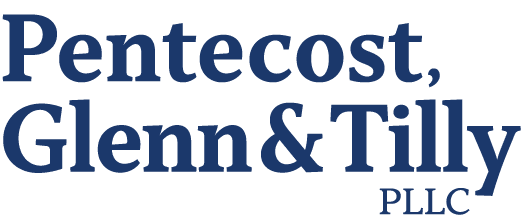Help for Small Business Under the Coronavirus, Aid, Relief and Economic Security (CARES) Act
Help for Small Business Under the Coronavirus,
Aid, Relief and Economic Security (CARES) Act
Pentecost, Glenn & Mauldin, PLLC
The federal government recently passed the CARES Act to provide economic relief to small businesses and individuals in the face of the Coronavirus pandemic and resulting economic shutdown. CARES utilizes an existing federal loan program, and creates another, to provide two important means of relief for U.S. small businesses.
Economic Injury Disaster Loan (EIDL) and Economic Injury Grants
The Economic Injury Disaster Loan program is an existing loan program that is administered through the Small Business Administration (SBA). However, this is the first time that a pandemic has been defined as a disaster. Because of this declaration, EIDL loans are available to businesses throughout the country that suffer an economic injury as a result of the pandemic. The CARES Act has expanded the existing program as follows:
- Loans up to $2 Million (actual loan amounts are based on amount of economic injury) to small businesses or private, non-profit organizations that suffer substantial economic injury as a result of the declared disaster;
- The term of such loans are 30 years;
- Interest Rates are 3.75% for small business and (2.75% for non-profits);
- The first month’s payments are deferred for one year from the date of the promissory note;
- EIDL can be approved based solely on applicant’s credit score;
- Loans under $200,000 can be approved without a personal guarantee;
- Borrowers can receive $10,000 in an emergency grant cash advance that can be forgiven if spent on approved items, such as paid leave, maintaining payroll, mortgage or lease payments, or repaying obligations that cannot be met due to revenue loss;
- Normal requirement that borrower cannot receive credit elsewhere is waived.
APPLY HERE https://www.sba.gov/funding-programs/disaster-assistance
Paycheck Protection Program (PPP)
The CARES Act allocated $350 Billion for SBA backed loans to allow businesses to retain workers, maintain payroll and make ongoing mortgage, lease and/or utility payments. These loans may also be subject to forgiveness.
The program is available to a host of businesses, including independent contractors, sole proprietors, self employed individuals, small businesses (pursuant to SBA size standards), businesses with fewer than 500 employees, certain non-profits, and certain other businesses. Borrowers will be required to execute a good faith certificate that they have been affected by the pandemic and that the funds will be used to retain workers, maintain payroll and other debt obligations and that the Borrower is not receiving other SBA funds for the same purpose.
The maximum amount of a PPP loan is 250 percent of their average monthly payroll expenses, up to a total of $10 million. This amount is intended to cover eight (8) weeks of payroll expenses and any additional amounts for making payments towards debt obligations. This 8-week period may be applied to any time frame between February 15, 2020 and June 30, 2020. Seasonal business expenses will be measured using a 12-week period beginning February 15, 2019, or March 1, 2019, whichever the seasonal employer chooses.
Other terms:
- As with EIDLs the requirement that Borrowers can’t receive credit elsewhere is waived;
- Payments deferred for six (6) months to a year following loan origination;
- No Prepayment penalty;
- Maximum interest rate of 4%;
- Loan term up to ten (10) years;
- No personal guarantee, collateral; or bank fees;
- Loan may be subject to forgiveness.
PPP Loan Forgiveness.
One of the most attractive features of a PPP loan is that the balance may be subject to forgiveness. Loan forgiveness applies to all portions of the principal balance used for payroll, existing interest payments on a mortgage (incurred prior to 2/15/2020), rent payments on an existing lease (entered into prior to 2/15/2020), group health premiums, and utilities. Included expenses must be incurred during any eight (8) week period between 2/15/2020 and 6/30/2020.
Loans are forgiven at the end of the eight (8) week period after you take out the loan. Forgiveness is subject to verification of covered expenses, so Borrowers should make sure to keep detailed records of expenses for the covered period.
Reduction of Loan Forgiveness
Because one of the purposes of the PPP program is to allow businesses to retain workers, there will be a reduction in the amount of loan forgiveness if:
- There is a reduction in the number of workers employed;
- There is a reduction of greater than twenty-five percent (25%) in wages paid to workers making less than $100,000 annually.
Reductions in the number of workers are measured from the eight (8) week period after the loan is made compared to either (i) February 15, 2019 to June 30, 2019 or (ii) January 1, 2020 to February 29, 2020. The Borrower can elect the period of time used for the analysis.
Reductions in wages are measured for each employee by the compensation for the most recent full quarter during which the employee was employed.
Borrowers won’t be penalized for a reduction in employment or wages during the period from February 15, 2020 to April 26, 2020, if they re-hire employees that were previously laid off, or restore any decreases in wages or salaries by June 30, 2020.
EIDL and PPP May Not Be Used At The Same Time For the Same Purpose.
A Borrower may have an EIDL loan and a PPP loan but they cannot obtain both for the same purpose. For example, if you use your PPP to cover payroll for the eight (8) week covered period, you cannot use an EIDL for payroll for those same costs in that period, although you could use it for payroll not falling within that period, or for different workers.
However, if you have an existing EIDL, you can refinance it into a PPP loan that may be subject to forgiveness.
If a Borrower receives the $10,000 grant funds from SBA under the EIDG program then that amount would be subtracted from any loan forgiveness under PPP.
You can apply for a PPP with a local lender. This pandemic has created extremely novel issues that are ever-changing, and if we can assist you in any of these issues above, or other unique situations that have arisen for you personally, or for your business, please do not hesitate to contact us at 731.668.5995.





